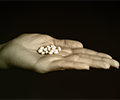Clinical articles
April 2018 Br J Cardiol 2018;25:69–72 doi :10.5837/bjc.2018.011
The effect of EECP on functional exercise capacity and symptom burden in refractory angina
Noman Ali, Haqeel A Jamil, Mohammad Waleed, Osama Raheem, Peysh Patel, Paul Sainsbury, Christopher Morley
| Full textApril 2018 Br J Cardiol 2018;25:54–7 doi :10.5837/bjc.2018.012
A study in the diagnosis and management of syncope: a retrospective review
Joseph Wilson, Donna Dalgetty, Selda Ahmet, Nida Taher, Mehran Asgari
| Full textApril 2018 Br J Cardiol 2018;25:58–62 doi :10.5837/bjc.2018.013
A novel ambulatory syncope assessment unit is safe and cost-effective in a low-risk patient cohort
Hamish I MacLachlan, Christopher J Allen, Gothandaraman Balaji
| Full text
March 2018 doi :10.5837/bjc.2018.005
Rhythm analysis of direct access 12-lead ECGs in patients complaining of palpitation
Morgan A Hughes, Peter J Bourdillon
| Full text
March 2018 doi :10.5837/bjc.2018.006
Diagnostic utility of real-time smartphone ECG in the initial investigation of palpitations
Anthony D Dimarco, Eunice N Onwordi, Conrad F Murphy, Emma J Walters, Lorraine Willis, Nicola J Mullan, Nicholas S Peters, Mark A Tanner
| Full text
March 2018 doi :10.5837/bjc.2018.007
Older antidiabetic drugs
Emma Johns, Gerry McKay, Miles Fisher
| Full textMarch 2018 doi :10.5837/bjc.2018.008
Percutaneous transcatheter closure of the aortic valve to treat aortic insufficiency after LVAD implantation
Wala Mattar, Christopher Walker, Shelley Rahman Haley, Andre Simon, Charles Ilsley
| Full text
January 2018 doi :10.5837/bjc.2018.001 Online First
Cardio-oncology: a new sub-specialty
Jonathan Bennett, Alexander R Lyon, Chris Plummer, Stuart D Rosen, Kai-Keen Shiu
| Full textJanuary 2018 doi :10.5837/bjc.2018.002 Online First
Variability in use of IV nitrates and diuretics in acute HF: a ‘virtual patient’ clinical decision-making study
Alison Carr, Fosca De Iorio, Martin R Cowie
| Full textJanuary 2018 doi :10.5837/bjc.2018.004 Online First
Recognition and management of aVR STEMI: a retrospective cohort study
Ruan Vlok, Joshua Wall, Hannah Kempton, Thomas Melhuish, Astin Lee, Leigh White
| Full text
